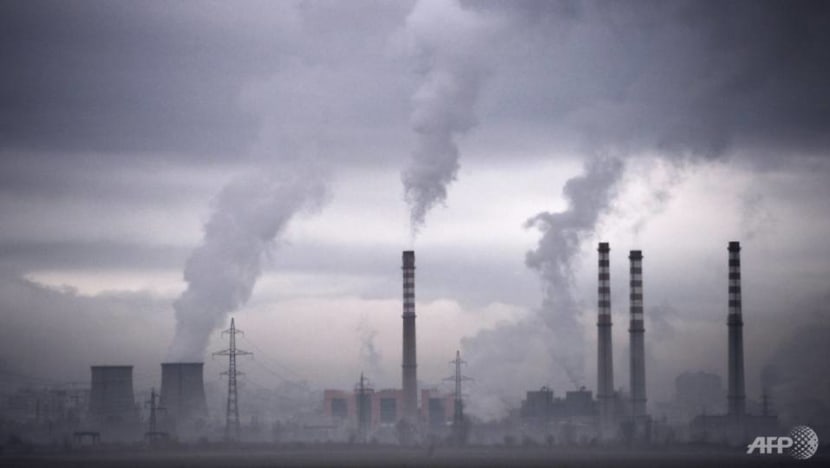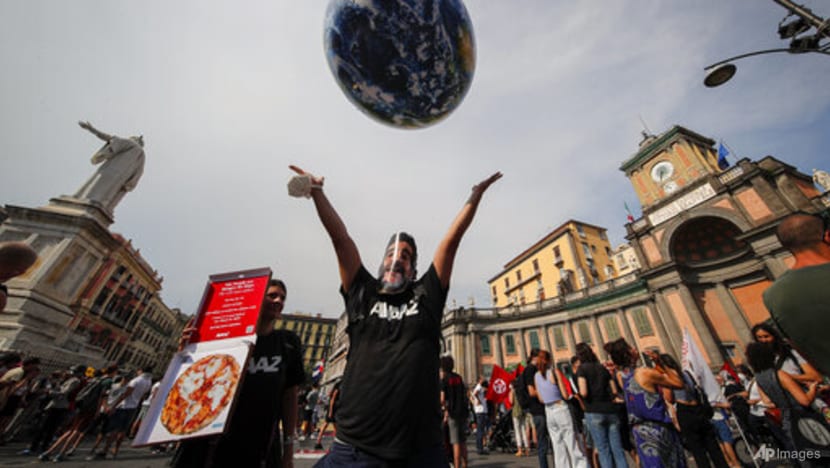Commentary: Big sticking points in how countries can meet Paris climate pledges
Mitigating climate change will be a long slog, not a one-off political announcement or celebrity endorsement, say energy researchers.

(Photo: AFP/Dimitar Dilkoff)
GOLDEN, Colorado: Two important events hosted by the United Nations are widely hoped to help address what the UN calls the “dual challenge” - fighting climate change and ensuring that poorer countries can develop sustainably. Energy is a central theme in both.
For the first time in 40 years, the UN General Assembly is convening a global summit of world leaders focused solely on energy.
If all goes as planned on Sep 24, and in meetings surrounding the summit, they will consider a road map that includes tripling investment in renewable power and making affordable modern and clean energy available to everyone everywhere within the decade.
The second event is the UN climate conference in November, where negotiators representing nations around the world will be asked to ramp up their countries’ efforts to reduce their greenhouse gas emissions.
In the run-up to that conference, the US and European Union plan to announce a new effort in at least one area: A global push to cut methane emissions by nearly one-third by 2030.
Methane is a potent greenhouse gas that comes from leaking oil and gas infrastructure, coal mines, agriculture and landfills.
This year’s climate summit will be the first to assess progress toward meeting the 2015 Paris climate agreement, and there are some remaining sticking points in how nations will meet their promised targets.
Who are the climate activists behind their popular social media accounts? The Climate Conversations sits down with The Weird and Wild's Woo Qiyun:
Resolving these will be important for the credibility of the agreement and the willingness of developing countries to commit to further progress.
WHAT HAS BEEN ACHIEVED SO FAR?
Despite the ambitious goals in many countries, the world’s greenhouse gas emissions have continued to rise.
The year 2020 was a brief exception. Emissions fell significantly due to the global pandemic - but that trend has already reversed as economies recover.
The statements released by world leaders after the recent G7 and G20 meetings underlined recognition of the problem. Still, very few countries and companies have detailed plans and budgets in place to meet their own high-level goals.
Getting energy and climate policies worldwide headed in the same direction is a daunting task.
1. DEPLOY CARBON PRICING AND MARKETS MORE WIDELY
Only a few countries, states and regions currently have carbon prices that are high enough to push polluters to cut their carbon dioxide emissions. The climate negotiations in Scotland will focus on getting the rules right for global markets.
Making these markets function well and transparently is essential for effectively meeting the many net zero climate goals that have been announced by countries from Japan and South Korea to the US, China and the EU.

These include rules on the use of carbon offsets, which allow individuals or companies to invest in projects that help balance out their own emissions. They are currently highly contentious and largely not functional or transparent.
2. FOCUS ATTENTION ON HARD-TO-DECARBONISE SECTORS
Shipping, road freight and industries like cement and steel are all difficult places for cutting emissions, in part because they do not yet have tested, affordable replacements for fossil fuels.
While there are some innovative ideas, competitiveness concerns - such as companies moving production outside regulated areas to avoid regulations - have been a key barrier to progress.
Europe is trying to overcome this barrier by establishing a carbon border adjustment mechanism, with emission levies on imports similar to those for European producers. The Biden administration is also exploring such rules.
3. GET CHINA AND OTHER EMERGING ECONOMIES ON BOARD
It is clear that coal, the most carbon-intensive fossil fuel, needs to be phased out fast, and doing so is critical to both the UN‘s energy and climate agendas.
Given that more than half of global coal is consumed in China, its actions stand out, although other emerging economies such as India, Indonesia and Vietnam are also critical.
This will not be easy. Notably half of the Chinese coal plants are less than a decade old, a fraction of a coal plant’s typical lifespan.
4. FOCUS ON INNOVATION
Support for innovation has brought us cutting edge renewable power and electric vehicles much faster than anticipated.
More is possible. For example, offshore wind, geothermal, carbon capture and green hydrogen are new developments that can make a big difference in years to come.
Who leads in developing these new technologies, and which companies, will reap important economic benefits. They will also support millions of new jobs and economic growth.
Luckily, investors are actively supporting these technologies. More investors are starting to believe in energy transitions and are putting their money into developing the associated technologies.
Still, increased government support for research and development funding can catalyse these efforts.
An opportunity also exists to broaden innovation efforts beyond technology, to a systemic approach that includes dimensions such as market design, social acceptance, equity, regulatory frameworks and business models.
Are countries on track in transitioning to clean energy to reach net zero emissions by 2050? Find out from IEA's Timur Gul on The Climate Conversations:
Energy systems are deeply interconnected to social issues, so changing them will not be successful if the solutions focus only on technology.
NO ONE SOLUTION
It is likely that UN energy and climate deliberations over the coming months will continue to move in fits and starts. The real work needs to take place at a more practical implementation level, such as in states, provinces and municipalities.
If there is one thing we have learned, it is that mitigating climate change will be a long slog, not a one-off political announcement or celebrity endorsement. It requires much more than simply repeating platitudes.
Politicians need to show that the many energy transitions emerging are good for economies and communities and can create long-lasting jobs and tax revenues.
While it’s uncontested that the benefits of greenhouse gas mitigation far exceed the cost, it is not always easy to marry this with short-term political cycles.
Morgan Bazilian is Director of the Payne Institute and Professor of Public Policy at the Colorado School of Mines. Dolf Gielen is Payne Institute Fellow at the same school. This commentary first appeared on The Conversation.
















